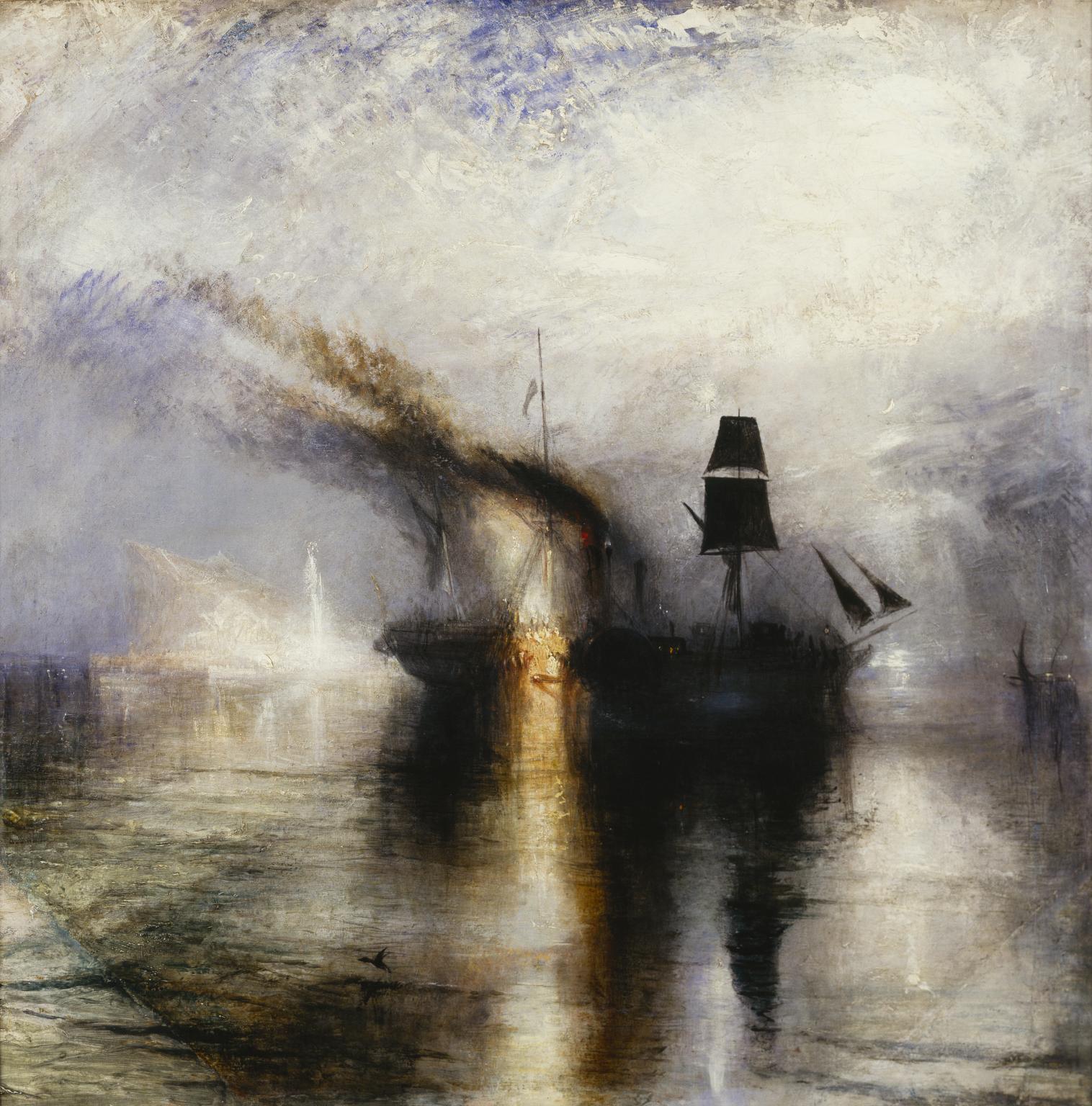Amid all his various claims to greatness, Turner possessed, in supreme measure, the power of reproducing in the mind of the spectator the impression which he himself received from any scene he chose to depict. Much of the controversy that has raged around his work has been due to this fact. It has been objected that his colors are untrue to nature, but on examination in detail they are found to correspond as exactly as could be possible to the natural tints. Color and form appealed to him in a particular way, and he painted them as he saw them, as the poet records the truth which inspires him. At a casual view, the easy critics may disagree with his interpretation; but careful study reveals the depths of Turner's insight, and the critic turns criticism to learning, and becomes a pupil. As a colorist, reproducing the beauties of sea and sky and atmosphere, he stood alone. By the richness of his tones, and skillful contrasts of light and shade, he displayed an additional mastery which gives his work a more powerful effect still. Particularly in the painting of skies, and by the effect of distance which he obtains, is his work is invested with a strong individuality. In this picture these qualities are well displayed. The funereal black of the sails, though it has been condemned as "false sentiment," strongly suggests the idea of mourning, which is further emphasized by the subtle colorings rendered all the more striking by reason of their strong contrasts. The scene shows the burial of Sir David Wilkie, R.A. who died suddenly at sea off Gibraltar, and the picture is Turner's tribute to the memory of his friend, whose body is being lowered into the deep in a blaze of torchlight.




Peace: Burial at Sea of the Body of Sir David Wilkie
oil on canvas • 87 cm x 86 cm